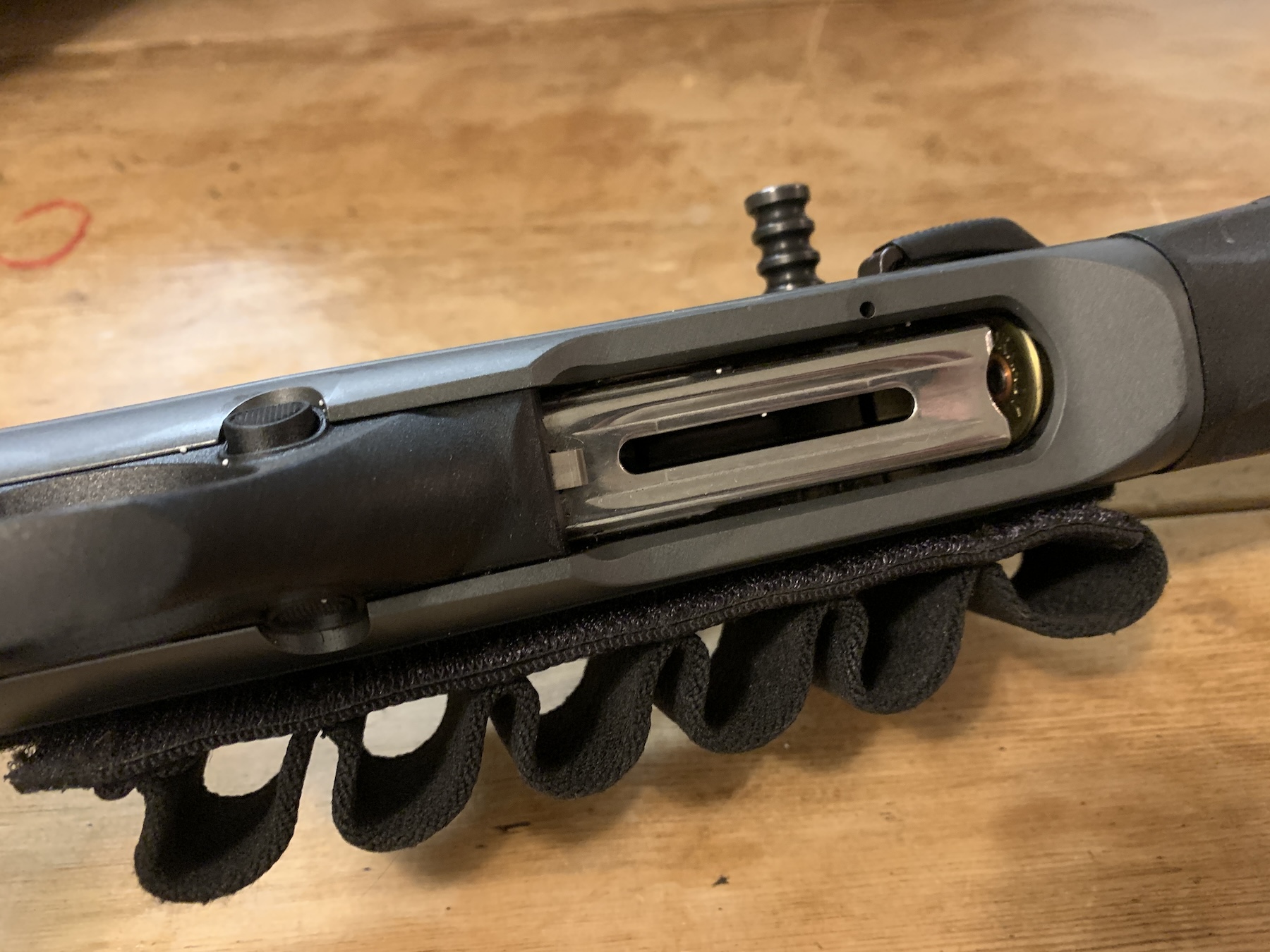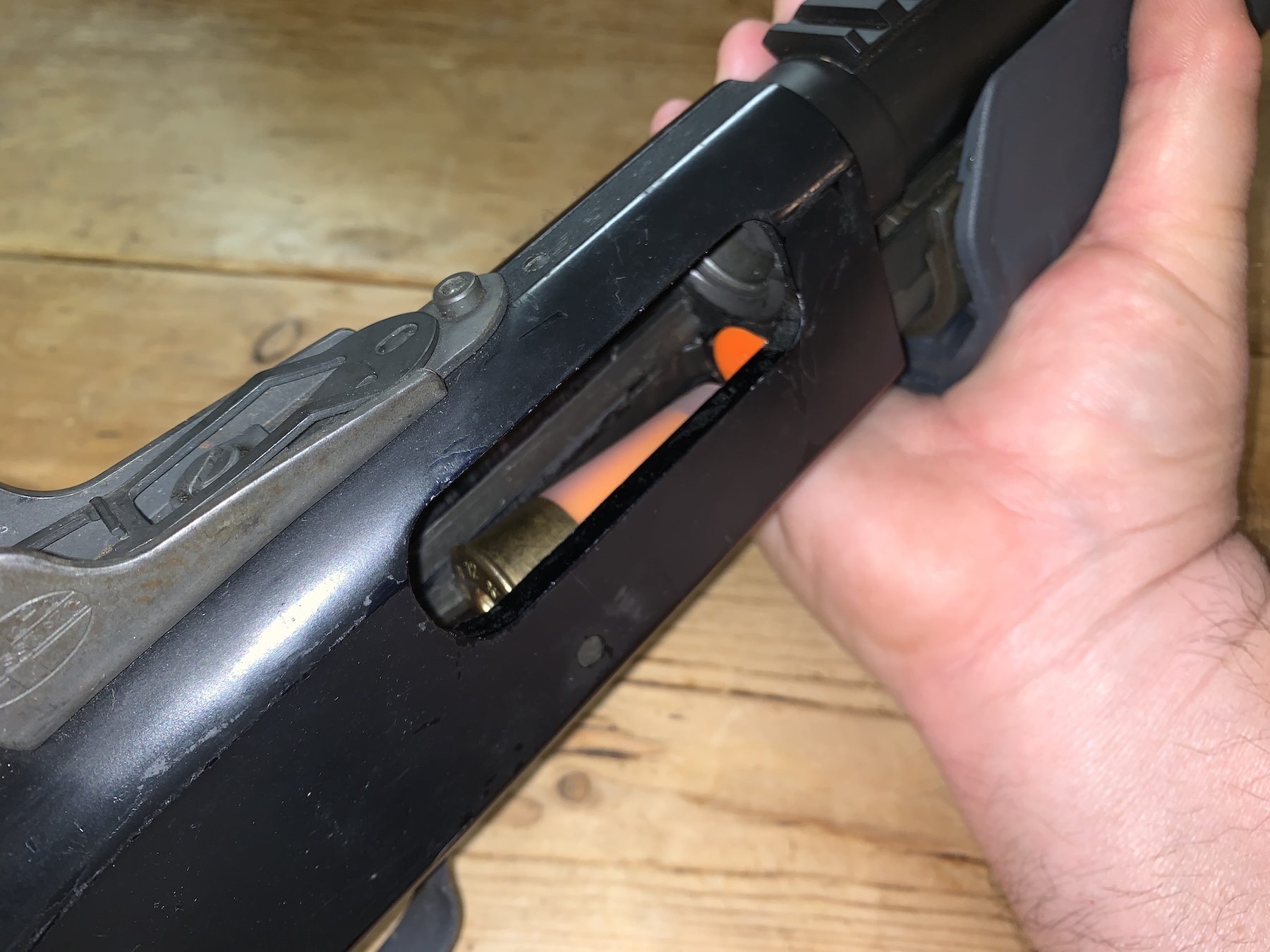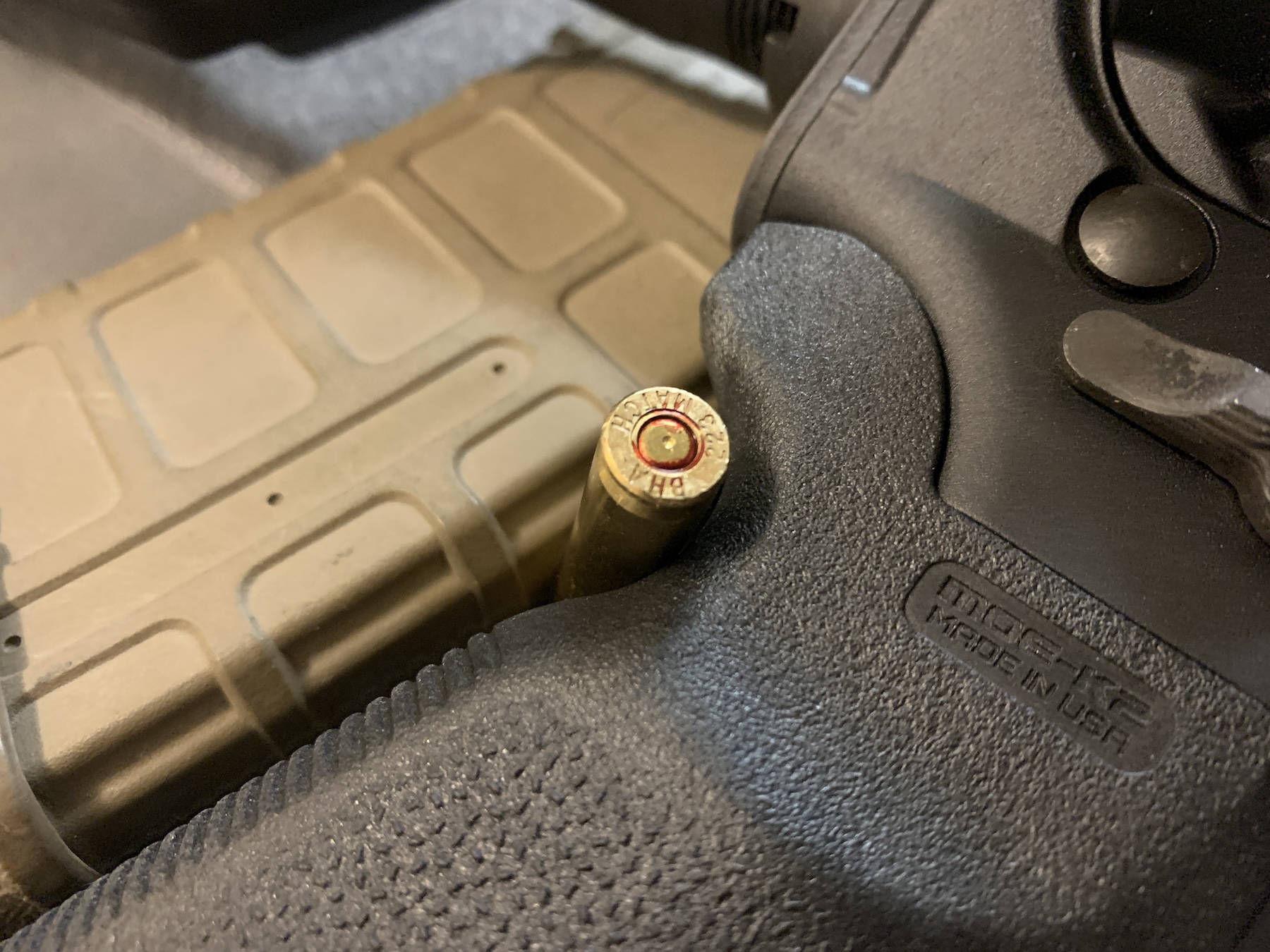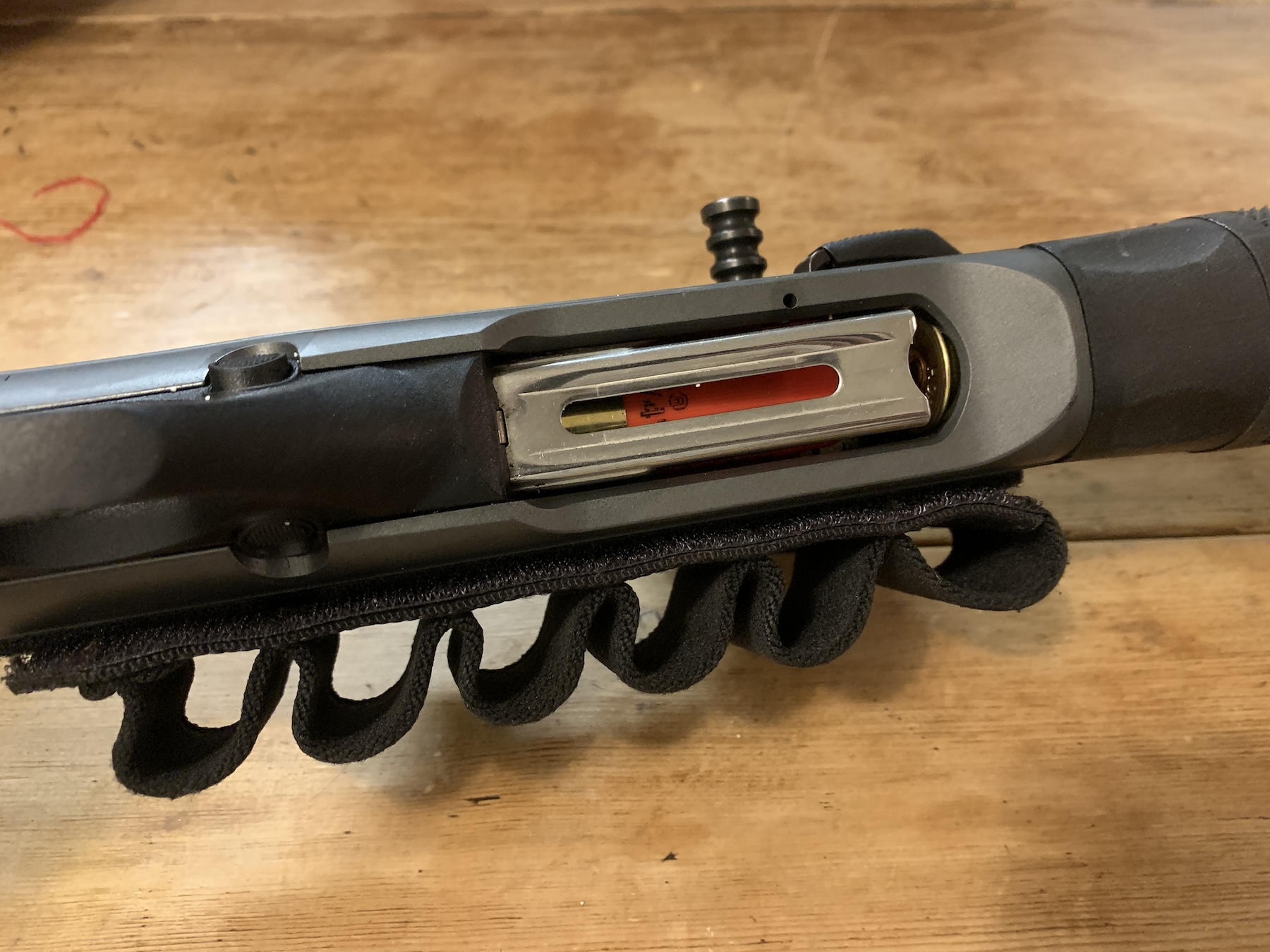
Screenshot 2023-11-07 at 6.56.16 AM
A fair amount of defensive firearms training comes from the experience of domestic law enforcement.
That is not necessarily a bad thing, as it can be experience-driven. Likely, it is vetted within local and federal statutes and case law. Unfortunately, it means development and evolution can be hampered by decades of tradition.
Could one of these areas be long gun carriage in vehicles and storage in homes?
In the Car
For several decades, our police officers and deputy sheriffs have mostly carried their long guns in locked racks in their patrol vehicles. When I started out (pre-air bags), that rack was upright on the passenger side of the transmission hump. You could reach over with your right hand, press the unlock button, and pull the clamp arm open in one movement.

The safety is on and all of the shells are in the magazine tube – Beretta’s A300 Ultima Patrol shotgun. The shell release is protruding at the rear of the carrier.
Cruiser Ready
How was the shotgun staged? Back then, the most common method was:
- Hammer down on an empty chamber.
- Off-safe.
- Four rounds of 12 gauge, 12 pellet magnum 00Buck shells in the magazine tube.
You might even find “things” in the barrel during the daily inspection.
The idea behind this way of setting up the shotgun was that you only needed to rack the unlocked action to put it in action. Safety? Outside of a few guys carrying 1911s, who used safeties?
Over time, based on a lot of work with shotguns in both the cop world and with citizens using them defensively, I began favoring two changes to cruiser-ready carry.
The first was using the mechanical safety. Shooters would not take the time to put it on after cycling the action. So, let’s start out with the shotgun on-safe.
[Whiny voice] But it’s hard to learn to take that off. [Me] So? Learn your gun.
The second? Keeping the action locked. You have to cycle the action anyway. Just leave it cocked rather than pressing the trigger to drop the hammer on a (maybe?) unloaded chamber.
[Whiny voice] But now I must do two things before I can make the gun go bang. [Me] Good, learn your gun.If I can only get students to adopt one, it starts with the safety on. But I’ll sure argue for both.
We aren’t losing long-gun fights because it takes a bit longer to rack the action.
Closet Ready
In teaching at Gunsite and elsewhere, I needed to translate cop gun stuff into decent, normal human stuff. And they, like off-duty cops, have slightly different concerns from a gal or guy in a patrol car.
Who can access that shotgun? Are there concerns about it falling or being dropped? How can you prevent unwanted manipulations?
To address those, I looked at my expanded version of Cruiser Ready. In those classes, I refer to it as Closest Ready.
Setting It Up
When on or off duty, with a semi-auto or pump, I set the shotgun up the same way:
Safety On;
Shells in the mag tube;
Ensure your optic and weapon-mounted light are functional.

Depressing the Mossberg’s action release let me run the action to the rear and start the feeding of this (dummy) shell.
Getting It Into Action
1st, get the shotgun in hand; 2nd, hit the action (or shell) release; 3rd, run the action; 4th, mount the ‘gun; and 5th, take the safety off as you come up on target.
Patrol Rifle Concern
From the beginning, we treated these the same – Bolt closed on an empty chamber, weapon off-safe, and the magazine seated. Again, over time, I included keeping the weapon on-safe, which meant it had to be cocked as well.
After uncasing it or getting it out of the rack, you pulled the charging handle to the rear and let it go. Some would verify a round had been chambered.

Back when I was still working, this was my set-up; bolt carrier closed on an empty chamber, hammer cocked & safety on. Two 20-rd magazines in or on the rifle.
Until this weekend, I was comfortable with the modified procedures for use at home or at work. Then, I came across an article by Jeff Felts. Felts, a retired career cop in the Midwest, runs the National Patrol Rifle Championship (NPRC). He also owns Center Mass Inc., a business focused on patrol rifle, SWAT, and active killer response-related issues.
Felts’ Paper
Saturday morning, I came across a post from a four-page offering from Felts about the need to change law enforcement policy and practice away from what I have mentioned above. He is basing that on personal experience (he short-stroked an AR in the field), observations in competition (at the NPRC), and reviewing BWC footage. Now, Felts is arguing that officers should set up and secure their patrol rifles – with a round in the chamber followed by a loaded magazine and the safety engaged. That way, the rifle is ready to be employed as soon as it clears the rack.

Bullet setback can happen when repeatedly chambering the same round. This came from just ten cycles.
He mentions that our military regularly carried loaded M4s in vehicles in the Middle East and elsewhere. Concur, I certainly did. However, they were not in vertical racks. They were usually in the hand/hands of the Soldier or Marine carrying them.
I will add that nearly every negligent discharge I was aware of overseas happened while administratively unloading the weapon.
Could negligent discharges increase? He says that’s possible but adds most happen during administrative handling, like unloading them after calls. These can be mitigated through training.
In writing this article, I spoke with two good friends, both of whom have significant experience. They had polar opposite views on the idea.

The AR-15’s free-floating firing pin causes a dimple like this when a round is chambered. Will this cause a problem if left loaded in the rack?
Firing Pins and Primers
There have been concerns about repeated chambering of defensive duty rounds. Can they de-sensitize the primer so it won’t fire? Or do they stress the primer to where it fires with a very light strike, like when chambering? Better information is needed.
Closing
I cannot tell you if Felts is right or wrong. His idea is at least worth considering. I would be very interested in seeing a long-term test – say, six months – with a few hundred AR-15s in patrol car racks with live rounds, or at least primed cases, in the chambers. Then, we could see what happens and make informed decisions. Trainers and Supervisors should, at least, consider suggestions like these while weighing the pros and cons.
















